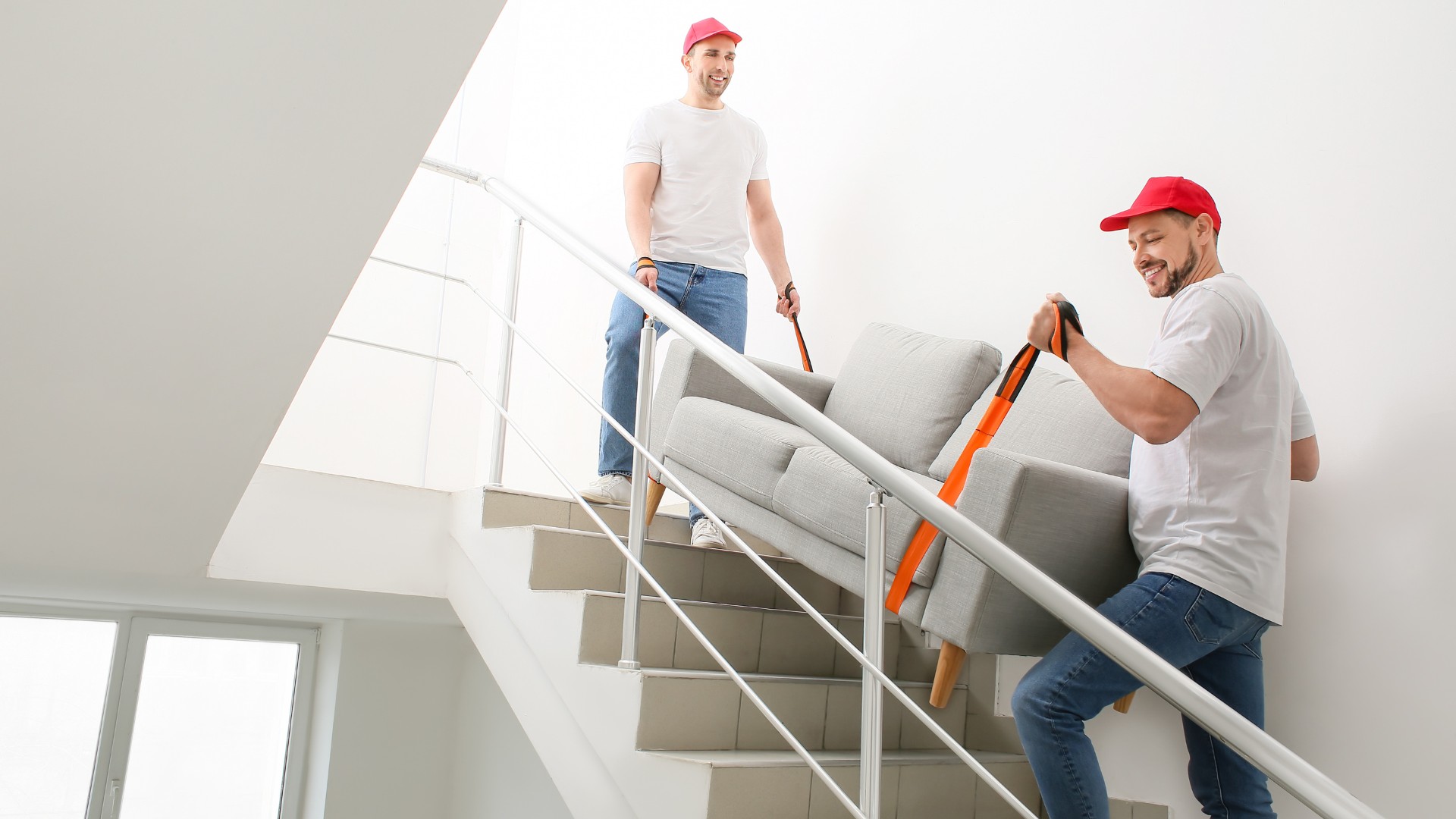

Articles
How To Move Furniture Up Stairs
Modified: August 22, 2024
Learn how to safely move furniture up stairs with our step-by-step guide. Get expert tips and techniques to make the process easier and avoid damage.
(Many of the links in this article redirect to a specific reviewed product. Your purchase of these products through affiliate links helps to generate commission for Storables.com, at no extra cost. Learn more)
Introduction
Moving furniture can be a challenging and daunting task, especially when it comes to navigating stairs. Whether you are moving into a new home or rearranging furniture within your current space, maneuvering large and heavy items can seem overwhelming. However, with the right planning, techniques, and a bit of muscle, you can safely move furniture up stairs without causing damage to yourself or your belongings.
In this article, we will provide you with a comprehensive guide on how to move furniture up stairs. We will cover everything from assessing the furniture and preparing for the move to choosing the right technique and ensuring safety throughout the process. By following these steps, you will be able to successfully navigate any staircase and relocate your furniture with ease.
Before you begin the moving process, it’s essential to assess the furniture you plan to move. Consider the size, weight, and shape of each piece to determine the most suitable technique and equipment needed for the job. Additionally, take measurements of your staircase to ensure that the furniture can fit through the space without any issues.
Preparing for the move involves clearing the path and securing the stairs to create a safe and obstacle-free environment. Remove any potential tripping hazards, such as rugs or loose items, from the area. Use protective coverings on the stairs, such as carpet film or cardboard, to prevent any damage to the steps or furniture during the process.
Depending on the nature of your furniture, you may need to disassemble certain pieces before attempting to move them up the stairs. This includes removing legs, detachable components, or disassembling large items such as bed frames. Keep track of any screws, bolts, or small parts by placing them in labeled bags or containers to ensure easy reassembly later on.
Once the path is clear and the furniture is disassembled (if applicable), it’s time to gather the necessary tools and materials for the move. Some essential items include moving blankets, furniture slides, straps or ropes, and a dolly or hand truck. Having these tools on hand will make the moving process smoother and more efficient.
Choosing the right technique for moving furniture up stairs depends on the size, weight, and shape of the item. For smaller and lighter pieces, furniture slides or moving blankets can be used to glide the furniture up the stairs. Place the slides or blankets under the furniture and gradually push or pull it up the staircase.
For larger and heavier pieces, using straps or ropes can provide extra support and stability. Securely attach the straps or ropes around the furniture and have one or two people lift while another person guides the furniture up the stairs.
In some cases, sliding or tilting the furniture at an angle can make it easier to navigate the staircase. Use caution and ensure that the furniture is properly balanced to prevent any accidents or damage.
If you have a particularly heavy or awkwardly-shaped item, consider utilizing a three-person lifting technique. Have two people lift the furniture from the front, while a third person supports the back. This evenly distributes the weight and reduces the risk of strain or injury.
Throughout the moving process, it’s crucial to take breaks and prioritize safety. Moving furniture can be physically demanding, so listen to your body and rest when needed. Remember to lift with your legs, not your back, and use proper lifting techniques to avoid injury.
Once the furniture has been successfully moved up the stairs, it’s time to reassemble any pieces that were taken apart. Refer back to the labeled bags or containers containing the screws and bolts to ensure a seamless reassembly process.
With careful planning, the right techniques, and a focus on safety, moving furniture up stairs can be a manageable and successful task. By following the steps outlined in this guide, you can move your furniture with confidence and ease. So roll up your sleeves, gather your tools, and get ready to tackle your next furniture-moving endeavor!
Key Takeaways:
- Moving furniture up stairs requires careful assessment, preparation, and technique selection based on the furniture’s size and weight. Prioritize safety, take breaks, and use proper lifting techniques to ensure a successful and injury-free move.
- Utilize furniture slides, straps, or a three-person lifting technique based on the furniture’s size and weight. Clear the path, secure the stairs, and communicate effectively to ensure a smooth and safe furniture move.
Read more: How To Move A King-Size Mattress Up Stairs
Assessing the Furniture
Before attempting to move furniture up stairs, it’s crucial to assess each piece to determine the best approach for a successful and safe move. Consider the size, weight, and shape of the furniture, as well as any disassembling requirements. Taking the time to assess your furniture will help you plan accordingly and choose the appropriate tools and techniques.
Start by examining the dimensions of the furniture. Measure the height, width, and depth to ensure that it will fit through your staircase and any doorways or tight spaces along the path. If a piece is too large to fit, you may need to disassemble it or consider alternative methods, such as hoisting through a window.
Next, assess the weight of the furniture. Heavier items will require extra support and potentially additional people to assist in the moving process. It’s important to have a clear understanding of the weight to prevent any strain or accidents during the move.
Consider the shape of the furniture as well. Items with irregular shapes, such as curved or angled pieces, can be more challenging to maneuver up stairs. Take note of any protruding parts or fragile components that may need special attention during the move.
If your furniture has disassembling capabilities, take advantage of this option to make the transport easier. Check for removable legs, detachable components, or sections that can be taken apart. Keep track of any screws, bolts, or small parts by storing them in labeled bags or containers. This will ensure that you can easily reassemble the furniture later on.
Remember to factor in the fragility or value of the furniture. If an item holds sentimental or monetary significance, take extra caution to prevent any damage during the move. Consider using protective covers or wrapping delicate parts with padding or bubble wrap to ensure its safety.
Having a clear understanding of your furniture’s dimensions, weight, shape, and disassembling requirements will allow you to properly plan for its relocation. Take the time to assess each piece before beginning the moving process, and make any necessary preparations to ensure a smooth and successful transition up the stairs.
Preparation
Proper preparation is key when it comes to moving furniture up stairs. By taking the time to prepare the space and gather the necessary tools, you can create a safe and efficient environment for the move.
Start by clearing the path leading to the stairs. Remove any tripping hazards, such as rugs, loose objects, or clutter, to prevent accidents during the moving process. This includes ensuring that there are no obstacles on the stairs themselves, such as loose carpeting or damaged steps. Clearing the path will provide a clear and unobstructed route for moving the furniture without any complications.
Once the path is clear, it’s important to secure the stairs to avoid any damage to the furniture or the staircase itself. Use protective coverings on the steps, such as carpet film or cardboard, to prevent scratches or dents. Secure the covering with tape or adhesive to ensure it stays in place during the move.
In addition to securing the stairs, you may also want to protect the walls and door frames along the path. Place furniture blankets, padding, or cardboard on the walls and door frames to prevent any accidental bumps or scratches.
If your furniture is especially heavy or valuable, consider using floor runners or protective mats on the floor to avoid any potential damage during the moving process. These can provide an extra layer of protection for both the furniture and the flooring.
Before moving the furniture, it’s also a good idea to have a plan in place for where each piece will go once it reaches its destination. Measure the doorways, hallways, and the final room to ensure that the furniture can be maneuvered into its intended location without any issues. This planning will save time, effort, and potential frustration during the move.
Finally, gather all the necessary tools and materials you will need for the move. This may include moving blankets, furniture slides, straps or ropes, a dolly or hand truck, screwdrivers, and any other items specific to your furniture or situation. Having these tools readily available will make the moving process more organized and efficient.
By properly preparing the space and gathering the required tools and materials, you will create an environment that is conducive to a successful furniture move. Prioritize safety by clearing the path, securing the stairs, and protecting both the furniture and the surrounding areas. With these preparations in place, you can tackle the next steps with confidence and ease.
Disassembling Furniture (if applicable)
Disassembling furniture can be a crucial step when moving it up stairs, especially for larger or bulkier items. By breaking down the furniture into manageable pieces, you can reduce the overall weight and size, making it easier to transport and navigate through tight spaces.
Before you begin the disassembly process, gather the necessary tools, such as screwdrivers, wrenches, or Allen keys, specific to your furniture. Having the correct tools on hand will make the process smoother and more efficient.
Start by carefully examining the furniture to identify any removable parts. This could include legs, shelves, arms, backrests, or other detachable components. Refer to the manufacturer’s instructions if available, as they may provide guidance on disassembling the furniture properly.
As you remove parts, place them in a labeled bag or container, and keep the screws, bolts, or small pieces together for easy reassembly later on. It’s important to stay organized during the disassembly process to avoid any confusion or lost components.
Take additional precautions for fragile or delicate furniture. Wrap any glass or fragile parts with foam or bubble wrap, securing them with tape to prevent damage during the move. For valuable or sentimental pieces, consider taking photographs before disassembling to have a visual reference for reassembly.
When disassembling furniture, be mindful of any electrical components or wiring that may be present. Disconnect and secure any plugs or cords, and take note of the proper way to reattach them later.
Keep track of the disassembled parts and their corresponding location within the furniture. This will make the reassembly process much smoother and less time-consuming. Labeling bags or containers with the name of the furniture piece or a description of the contents can help ensure everything goes back together correctly.
Once the furniture has been taken apart, double-check that all loose parts and components are securely stored. This will prevent any accidental misplacement or damage during the moving process.
Disassembling furniture can significantly simplify the moving process, particularly for large or bulky items. By carefully removing the necessary components and properly organizing the disassembled parts, you can ensure a smoother and more manageable relocation up the stairs.
Clearing the Path and Securing the Stairs
Before you start moving furniture up stairs, it is important to clear the path and secure the stairs to ensure a safe and obstacle-free environment. This preparation step will help prevent accidents and damage to both you and your furniture.
Begin by removing any potential tripping hazards along the path. Look for objects such as rugs, loose items, or clutter that may obstruct movement or cause accidents. Clearing the path will provide a smooth and unobstructed route for maneuvering furniture up the stairs.
If there are any loose or frayed carpeting on the stairs, it’s advisable to secure them or remove them temporarily. Loose carpeting can be a tripping hazard and can also impede the movement of furniture. Smooth and secure surfaces will make it easier to navigate and protect the stairs from any potential damage during the move.
Consider protecting the stairs by adding temporary coverings. You can use carpet film, plastic sheeting, or cardboard to shield the stairs from scratches, scuffs, or dents caused by the furniture. These materials can be easily secured with tape or adhesive and can be removed once the furniture has been moved.
Take extra precautions if you have hardwood or delicate flooring. Use floor runners or protective mats to provide an additional layer of protection for both the flooring and the furniture. This will help prevent any potential damage during the moving process.
While clearing the path and securing the stairs, also take note of any low ceilings, narrow doorways, or tight corners that may present challenges during the move. Ensure that the furniture will be able to pass through these areas without any difficulties. If necessary, measure the dimensions of the furniture and the clearance space to confirm a smooth passage.
Lastly, consider protecting the walls and door frames along the path. Place furniture blankets, padding, or cardboard on the walls to prevent any accidental bumps or scratches caused by large or unwieldy furniture pieces. Securing these areas with protective coverings will ensure the integrity of your walls and doorways.
Clearing the path and securing the stairs is an essential step in preparing for a successful furniture move up stairs. By removing any obstacles, protecting the stairs from damage, and ensuring sufficient clearance for the furniture, you can create a safe and controlled environment for the moving process.
Read more: How To Bring Heavy Furniture Up Stairs
Gathering the Required Tools and Materials
Before moving furniture up stairs, it is important to gather the necessary tools and materials to ensure a smooth and efficient process. Having the right equipment on hand will make the move easier and help protect both you and your furniture from damage.
The specific tools and materials you will need may vary depending on the size and weight of the furniture, as well as the layout of your stairs. However, here are some commonly used items that can be helpful during the moving process:
- Furniture Slides or Moving Blankets: These can be used to glide furniture along the stairs, minimizing friction and making it easier to move heavy pieces. Furniture slides are typically made of plastic or hard material, while moving blankets provide a protective cushioning effect.
- Straps or Ropes: Used to secure and stabilize the furniture during the move. Straps or ropes can provide additional support, reducing the risk of the furniture shifting or falling. Make sure the straps or ropes are strong and in good condition to safely handle the weight of the furniture.
- Dolly or Hand Truck: Particularly useful for large and heavy items. A dolly or hand truck can help distribute the weight of the furniture and make it easier to maneuver up and down the stairs. Ensure that the dolly or hand truck is sturdy and has appropriate weight capacity for your furniture.
- Screwdrivers or Allen Keys: Necessary for disassembling and reassembling furniture, if needed. Different furniture pieces may require different types of tools, so it’s important to have the appropriate ones on hand. Check the furniture assembly instructions or determine the types of screws or bolts used before selecting the right tools.
- Protective Gloves: To protect your hands and provide a better grip when lifting and maneuvering furniture.
- Tape Measure: Useful for measuring the furniture, doorways, and stairwell to ensure a proper fit and clearance.
- Padding or Bubble Wrap: For protecting fragile or delicate parts of the furniture, such as glass or mirrors.
- Labels or Markers: To clearly mark and identify disassembled parts or bags containing screws and bolts for easier reassembly.
Before starting the furniture move, ensure that all tools and materials are in good working condition. Inspect straps for any signs of wear or fraying, check the wheels on the dolly or hand truck, and confirm that all necessary components and accessories are available.
Gathering the required tools and materials ahead of time will save you time and stress during the furniture moving process. Be prepared and equipped with the necessary items to make the move safer, more efficient, and less prone to accidents or damage.
Choosing the Right Technique for Your Furniture
When it comes to moving furniture up stairs, it’s important to choose the right technique based on the size, weight, and shape of the furniture. Using the appropriate method will ensure a safe and successful move while minimizing the risk of injury or damage to your belongings.
Here are some common techniques you can consider:
- Using Furniture Slides or Moving Blankets: This technique is ideal for smaller and lighter pieces of furniture. Place furniture slides or moving blankets under the furniture to reduce friction and allow for smooth gliding along the stairs. With this method, one person can push or pull the furniture while another person guides it from behind. Make sure to secure the furniture on the slides or blankets to prevent it from slipping off.
- Utilizing Straps or Ropes for Extra Support: For larger and heavier furniture, using straps or ropes can provide additional support and stability. Securely attach the straps or ropes around the furniture, making sure they are tight and secure. This technique allows you to distribute the weight more evenly and reduces the strain on individual movers. It is recommended to have at least two people lifting and one person guiding the furniture up the stairs.
- Sliding or Tilting the Furniture Up the Stairs: This technique can be useful for maneuvering furniture with irregular shapes or angled pieces. Tilt the furniture at an angle and carefully slide it up the stairs. This method requires caution to ensure that the furniture remains properly balanced and doesn’t tip over. It is advisable to have at least two people involved in this technique to maintain control and stability.
- Lifting the Furniture Using a Three-Person Technique: This technique is ideal for extremely heavy or awkwardly-shaped furniture. Have two people lift the furniture from the front, while a third person supports the back. This evenly distributes the weight and reduces the risk of strain or injury. It’s important to communicate and coordinate movements when using this technique to maintain balance and control.
When selecting the appropriate technique, consider the dimensions and weight of the furniture, as well as your own physical abilities and limitations. It is advisable to have at least two people involved in the moving process for larger or heavier items to ensure safety and stability.
Remember to take breaks as needed and listen to your body. Moving furniture up stairs can be physically demanding, so it’s important to give yourself and your team time to rest and recover.
By choosing the right technique for your furniture, you can safely and efficiently navigate the stairs during the moving process. Consider the size, weight, and shape of the furniture, as well as your own capabilities, to determine the most suitable method and ensure a successful move.
When moving furniture up stairs, always make sure to measure the dimensions of the furniture and the stairwell to ensure a proper fit. It’s also helpful to disassemble larger pieces if possible to make the process easier.
Using Furniture Slides or Moving Blankets
When it comes to moving furniture up stairs, using furniture slides or moving blankets can be a practical and effective technique. This method is particularly useful for smaller and lighter pieces of furniture, allowing for smooth gliding along the stairs with reduced friction and minimal effort.
To use furniture slides, begin by placing them under the furniture’s legs or base. Furniture slides are typically made of smooth plastic or a hard material that allows for easy movement. Position the slides evenly to distribute the weight and ensure stability.
If you don’t have furniture slides, a viable alternative is to use moving blankets. These thick and padded blankets provide a cushioning effect and protect the furniture from scratches or damage during the move. Simply place the moving blankets underneath the furniture to create a smooth and protective surface.
To move the furniture using slides or blankets, have one person gently push or pull the furniture from the front, while another person guides and supports it from behind. Maintain clear communication to coordinate movements and ensure a steady and controlled ascent up the stairs.
It’s crucial to secure the furniture on the slides or blankets to prevent it from sliding off or becoming unstable during the move. Make sure the furniture is evenly balanced to maintain control and stability throughout the process.
One advantage of using furniture slides or moving blankets is that they help protect both the furniture and the stairs. These tools minimize the risk of scratches, scuffs, or other damage to the furniture’s surface, as well as potential damage to the stairs caused by dragging or sliding heavy pieces.
However, it’s important to note that this technique may not be suitable for heavier or bulkier furniture items, as they may require additional support or a different moving technique due to their weight and size. It’s essential to assess each piece of furniture and determine the right approach for its specific characteristics.
Using furniture slides or moving blankets provides a convenient and efficient way to move smaller and lighter furniture up stairs. These tools offer protection and ease of movement, making the stair-climbing process smoother and safer for both the furniture and the individuals involved in the move.
Utilizing Straps or Ropes for Extra Support
When it comes to moving larger and heavier furniture up stairs, utilizing straps or ropes can provide additional support and stability during the process. This technique is especially useful for items that require extra security and assistance due to their weight or size.
To utilize straps or ropes, begin by ensuring that they are in good condition and have a sufficient weight capacity to handle the load of the furniture. It’s important to use high-quality straps or ropes that are strong and durable.
Start by securely attaching the straps or ropes to the furniture. Wrap the straps or ropes around the furniture and fasten them tightly to prevent any shifting or loosening during the move. Be mindful of the furniture’s shape and structure to determine the best attachment points that will provide stability and balance.
As you attach the straps or ropes, ensure that the load is evenly distributed to prevent any tilting or imbalance. This will help maintain the stability of the furniture and ensure a safe and controlled ascent up the stairs.
When moving the furniture, it is typically best to have at least two people involved. They can lift the furniture from underneath while another person guides the movement. The person guiding should communicate with the lifters to coordinate movements and ensure a smooth and steady transition.
As you move the furniture up the stairs, the straps or ropes will provide additional support and security. They help distribute the weight more evenly, reducing the strain on individual lifters and minimizing the risk of injury.
Keep in mind that clear communication and coordination are crucial when using straps or ropes. The team should work together to lift, stabilize, and guide the furniture, ensuring that everyone is on the same page with each movement.
Utilizing straps or ropes for extra support provides an effective way to move larger and heavier furniture up stairs. The added stability and balance they provide help minimize the risk of accidents or damage during the moving process.
Remember to always prioritize safety and use caution when working with heavy furniture. Take breaks as needed to prevent fatigue, and ensure that everyone involved in the move is using proper lifting techniques.
Read more: How To Protect Furniture When Moving
Sliding or Tilting the Furniture Up the Stairs
Sliding or tilting the furniture up the stairs can be a useful technique when maneuvering furniture with irregular shapes or angled pieces. This method allows you to navigate through narrow spaces and tackle challenging staircases with greater ease.
Before attempting this technique, it’s important to assess the size and shape of the furniture to ensure that it can be safely slid or tilted. Ensure that the furniture is properly balanced and won’t tip over during the process.
To slide or tilt the furniture up the stairs, start by tilting the piece at an angle. You can do this by carefully lifting one side of the furniture while keeping the other side firmly on the ground. This shift in position will make it easier to navigate corners or tight spaces.
When sliding or tilting, it’s essential to maintain control and stability throughout the process. Ensure that each movement is gradual and controlled, allowing the furniture to glide smoothly along the stairs. Avoid jerky or sudden movements that could lead to instability or accidents.
If needed, you can place furniture sliders or moving blankets underneath the furniture to reduce friction and make the sliding or tilting process smoother. This can also help protect the furniture and the stairs from any potential scratches or damage.
When sliding or tilting the furniture, it’s recommended to have at least two people involved in the process. One person can lift and guide the furniture from the front, while another person provides support and stability from the back. Working together as a team will help ensure a safe and controlled ascent up the stairs.
Clear communication is vital when using this technique. The team members should coordinate their movements and stay in sync to prevent any accidents or missteps. Ensure that everyone involved is on the same page and understands their respective roles during the process.
It’s important to note that sliding or tilting should be done with caution, especially for larger or heavier furniture. Always prioritize safety and exercise caution when using this technique, ensuring that the furniture remains properly balanced throughout the move.
Sliding or tilting the furniture up stairs offers a practical solution for navigating challenging spaces. By carefully controlling the movement and working as a team, you can successfully move furniture with irregular shapes or angled pieces, making the process more manageable and efficient.
Lifting the Furniture Using a Three-Person Technique
Lifting heavy or awkwardly-shaped furniture up stairs can be challenging and potentially risky. However, by utilizing a three-person lifting technique, you can evenly distribute the weight and reduce the likelihood of injury or damage to yourself or the furniture.
This technique is particularly useful when dealing with extremely heavy or bulky items that require extra support and stability during the move.
Here’s how to lift furniture using a three-person technique:
- Positioning: The person in the middle should stand facing the furniture with their hands on either side. The two other individuals should be positioned on either side, facing each other, and place their hands underneath the furniture.
- Lifting: On the count of three, all three individuals should lift the furniture together. The person in the middle should take the lead and coordinate the lifting process.
- Walking: As the furniture is lifted, the person in the middle should guide the movement, indicating the direction and pace. The individuals on the sides should support the weight while walking up the stairs.
- Communicating: Clear and consistent communication is essential during the entire process. Everyone involved should communicate their movements and coordinate their steps to ensure smooth and controlled progress up the stairs.
When using the three-person lifting technique, it’s crucial to pay attention to your body mechanics. Lift with your legs, not your back, to avoid strain or injury. Keep your back straight and use your leg muscles to power the lift.
It’s important to note that this technique may require additional consideration and planning depending on the size and shape of the furniture. Assess the furniture and ensure that the weight is evenly distributed for a stable lift. If necessary, use straps or ropes to secure the furniture for added support.
By using the three-person lifting technique, you can minimize the risk of injury and safely navigate the stairs with heavy or cumbersome furniture. The even weight distribution allows for better control and reduces the strain on any individual person, making the move more manageable and safer for everyone involved.
Remember to take breaks as needed and listen to your body. Moving heavy furniture can be physically demanding, so it’s important to rest when necessary and avoid overexertion.
By implementing the three-person lifting technique and practicing proper lifting techniques, you can successfully move heavy furniture up stairs while minimizing the risk of injury and ensuring a smooth and controlled transition.
Taking Breaks and Ensuring Safety
Moving furniture up stairs can be physically demanding and potentially risky. It’s essential to prioritize safety and take breaks as needed to prevent exhaustion, strain, or accidents. Here are some important considerations to keep in mind:
Listen to Your Body: Pay attention to how your body feels during the moving process. If you start feeling fatigued, lightheaded, or experience any pain or discomfort, take a break. Pushing through exhaustion can increase the risk of accidents and injuries. Resting when needed will help you maintain focus, strength, and overall safety.
Hydrate and Fuel Your Body: Moving furniture is physically taxing work, so ensure that you stay hydrated by drinking plenty of water throughout the process. Additionally, fuel your body with nutritious snacks or meals to maintain energy levels. Avoid consuming excessive amounts of caffeine or sugary drinks, as they can lead to dehydration and energy crashes.
Use Proper Lifting Techniques: It’s crucial to use proper lifting techniques to avoid straining your muscles or causing injury. Bend your knees, not your back, and use the strength of your legs when lifting. Keep the furniture close to your body and maintain a straight posture. Avoid twisting or making sudden movements that can strain your back or other muscles.
Wear Appropriate Clothing and Footwear: Dress in comfortable clothing that allows for a wide range of motion. Avoid loose garments that can get caught or interfere with your movements. Choose supportive footwear with good traction to minimize the risk of slips or falls.
Communicate and Coordinate: Clear and constant communication is vital when moving furniture up stairs. Establish a clear plan, designate roles, and ensure that everyone involved is aware of their responsibilities. Coordinate your movements, especially when using techniques such as sliding, tilting, or the three-person lift. Keep the pathways clear and communicate any potential hazards or obstacles to avoid accidents or damage.
Use Assistive Tools and Equipment: Take advantage of assistive tools and equipment to make the moving process safer and more efficient. Furniture slides, moving blankets, straps, or dollies can help reduce strain on your body and protect the furniture and stairs from damage. Utilizing these tools properly can make a significant difference in maintaining safety during the move.
Seek Help if Needed: Don’t hesitate to ask for assistance if the furniture is too heavy or the task becomes overwhelming. Bringing in additional help can distribute the workload and reduce the risk of accidents or injuries.
Be Mindful of Obstacles: Maintain awareness of any potential obstacles along the stairway or in doorways. Clear away any items that could cause trips or impede your movement. Be cautious of low ceilings, narrow passages, or sharp turns, and adjust your approach accordingly.
Keep Children and Pets Safely Away: During the furniture move, ensure that children and pets are in a separate area away from the stairs and the moving path. This will reduce distractions and potential dangers for both the movers and the little ones.
Remember, safety should always be a top priority when moving furniture up stairs. By taking breaks as needed, using proper lifting techniques, communicating effectively, and being mindful of potential hazards, you can ensure a smooth and injury-free moving experience.
Reassembling Furniture (if applicable)
After successfully moving furniture up stairs, it’s time to reassemble any pieces that were disassembled prior to the move. Reassembling furniture requires careful organization, attention to detail, and proper handling of components to ensure that everything comes back together correctly.
If you disassembled any furniture before the move, refer back to the bags or containers where you stored the screws, bolts, and other small parts. Take out each component and group them based on their respective piece of furniture.
Having a clear workspace will make the reassembly process more efficient. Clear off a table or area where you can lay out the furniture parts and tools needed for reassembly. Keep the area well-lit with proper lighting to help you see clearly and work with precision.
Refer to the manufacturer’s instructions if available. These instructions can provide step-by-step guidance on how to reassemble the furniture correctly. If you don’t have the instructions, you can often find them online on the manufacturer’s website or by reaching out to their customer support.
Take your time and carefully follow the instructions for each piece of furniture. Use the proper tools, such as screwdrivers or Allen keys, to tighten screws, bolts, or other fasteners. Ensure that all parts align correctly and fit snugly.
If you encounter any difficulties or confusion during reassembly, consult the instructions again or seek assistance from the manufacturer or a professional if needed. It’s important to avoid forcing or incorrectly assembling any components, as this can lead to damage or instability.
As you reassemble the furniture, be mindful of any fragile or delicate parts. Use padding or bubble wrap to protect fragile materials or finishes. Take your time to ensure that all parts are securely attached and that the furniture is stable and safe to use.
Once the furniture is fully reassembled, do a final check to make sure that everything is in place, stable, and functioning as intended. Test any moving parts, such as drawers or hinges, to ensure they move smoothly and without issues.
Dispose of any packaging materials, bags, or containers properly. Clean up your workspace and return any tools to their designated storage areas.
Reassembling furniture after moving it up stairs may require some patience and attention to detail, but it will ensure that your furniture is ready to be used and enjoyed in its new location.
By carefully following the reassembly instructions, taking your time, and being meticulous in your approach, you can successfully bring your furniture back to its original form and functionality.
Read more: How To Walk Up Stairs
Conclusion
Moving furniture up stairs can be a challenging task, but with careful planning, proper techniques, and a focus on safety, it can be accomplished successfully. By assessing the furniture, preparing the space, gathering the necessary tools, and choosing the right technique, you can navigate stairs with ease and minimize the risk of injury or damage.
Assessing the furniture’s size, weight, and shape is crucial for determining the best approach for the move. Disassembling furniture, if applicable, can significantly simplify the process and make it more manageable. Clearing the path and securing the stairs provide a safe and obstruction-free environment, ensuring a smooth and controlled move.
Gathering the required tools and materials, such as furniture slides, straps or ropes, and a dolly or hand truck, can make the moving process more efficient and protect both the furniture and the movers. Choosing the right technique, whether it’s using furniture slides, straps or ropes, sliding or tilting, or employing a three-person lift, depends on the specific characteristics of the furniture and ensures a safe and effective move.
Throughout the process, it’s crucial to take breaks as needed and prioritize safety. Listen to your body, stay hydrated, and use proper lifting techniques to avoid strain or injury. Communicate with your team, coordinate your movements, and be mindful of potential obstacles to maintain a smooth and accident-free move.
If the furniture was disassembled, reassembling it correctly is essential for restoring its functionality and stability. Take your time, refer to instructions or online resources if available, and ensure that all parts are securely attached and aligned properly. Following these steps will ensure that your furniture is ready to be enjoyed in its new location.
Successfully moving furniture up stairs requires a combination of careful planning, proper techniques, and a focus on safety. By following the steps outlined in this guide, you can navigate stairs confidently, protect your furniture, and ensure a smooth transition to your desired location. So roll up your sleeves, gather your tools, and embark on your next furniture-moving adventure with confidence and ease!
Frequently Asked Questions about How To Move Furniture Up Stairs
Was this page helpful?
At Storables.com, we guarantee accurate and reliable information. Our content, validated by Expert Board Contributors, is crafted following stringent Editorial Policies. We're committed to providing you with well-researched, expert-backed insights for all your informational needs.

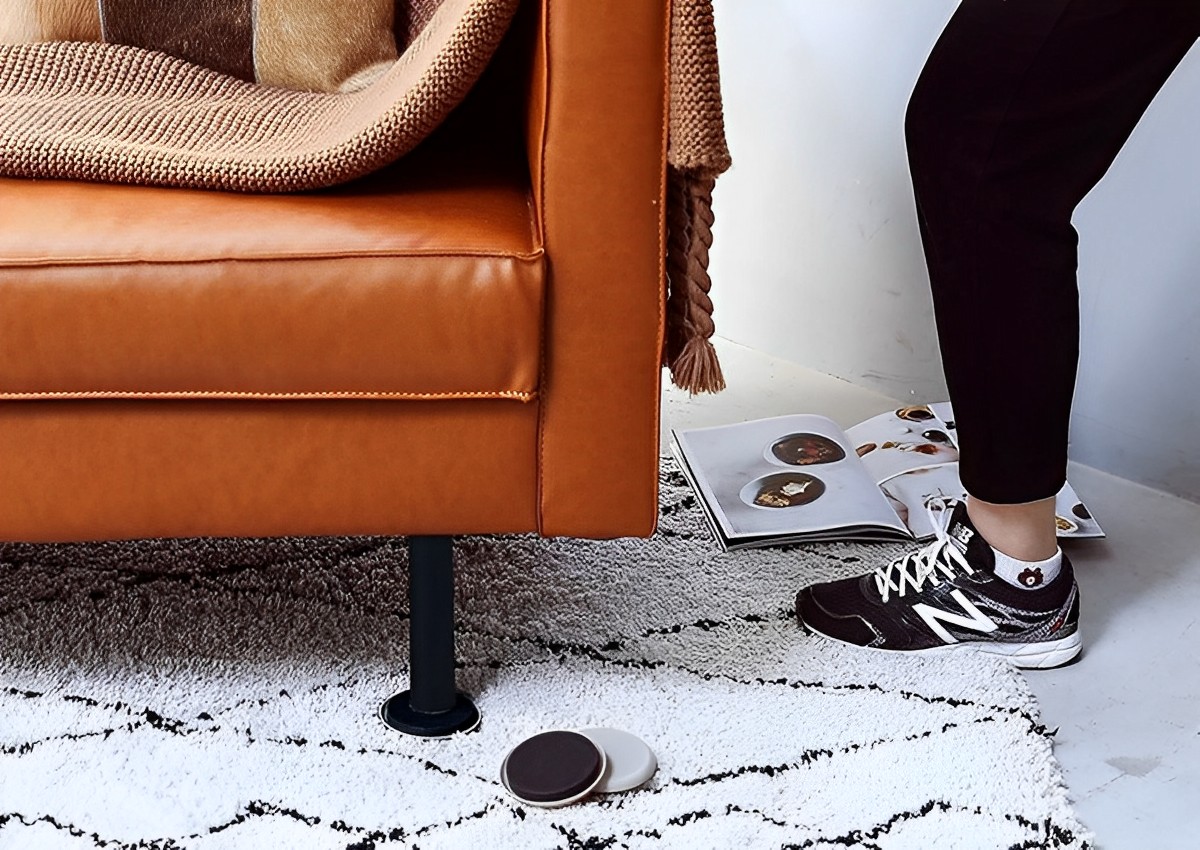
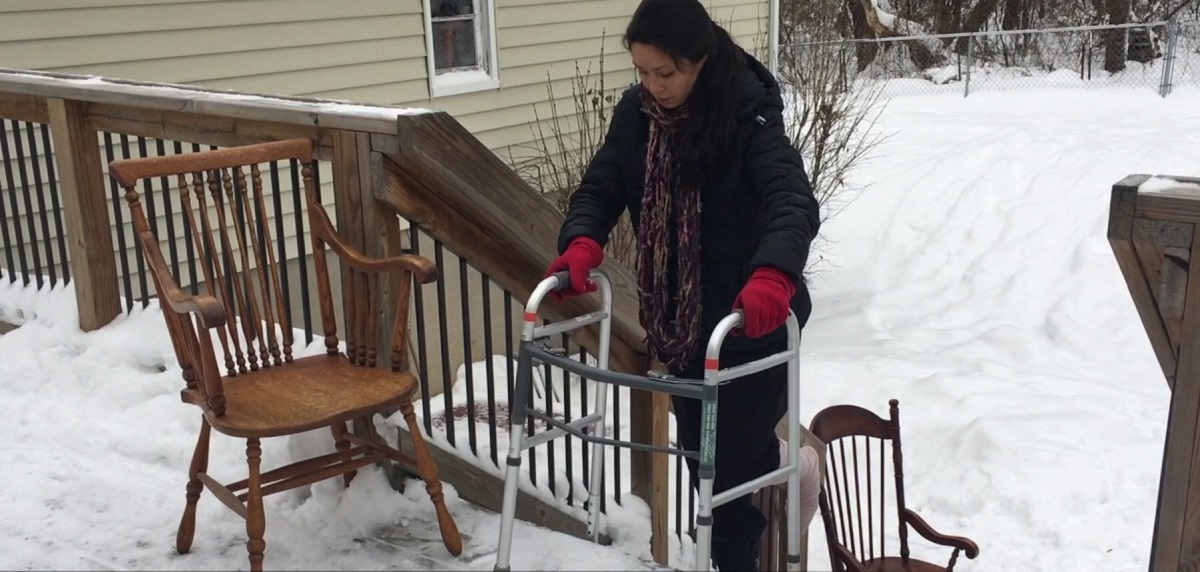
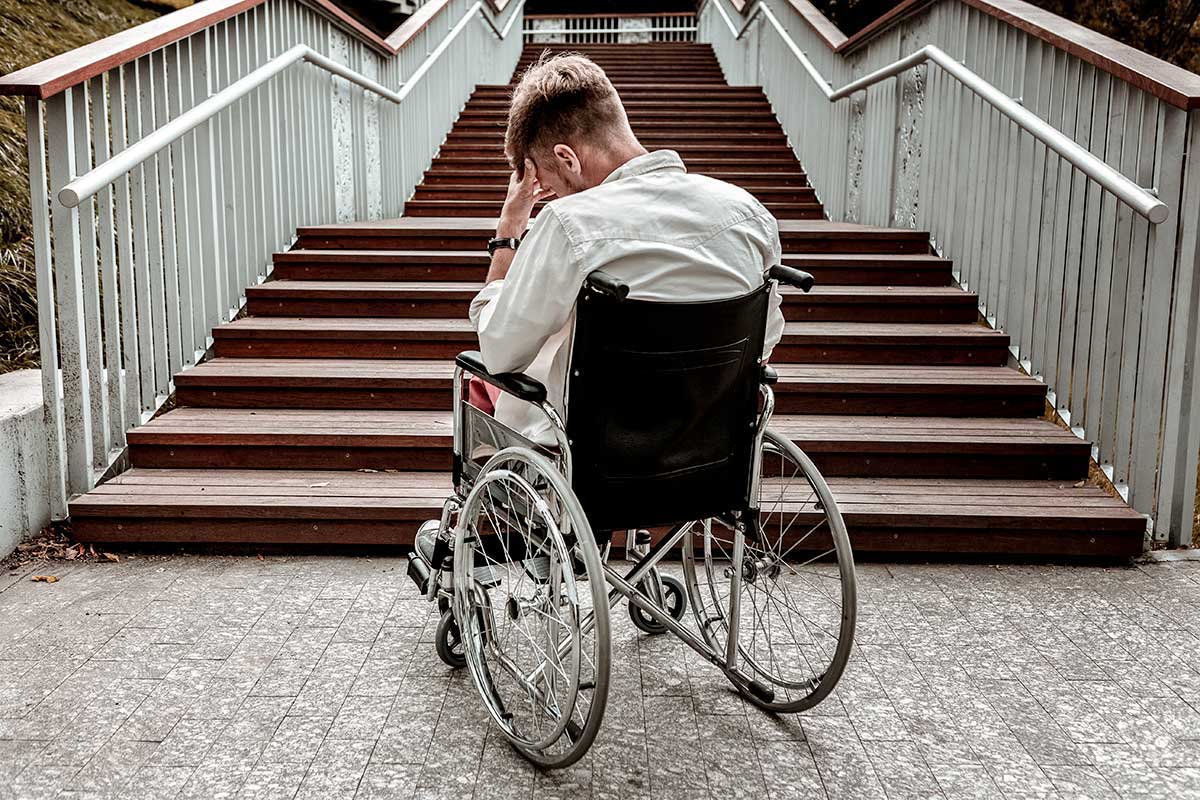
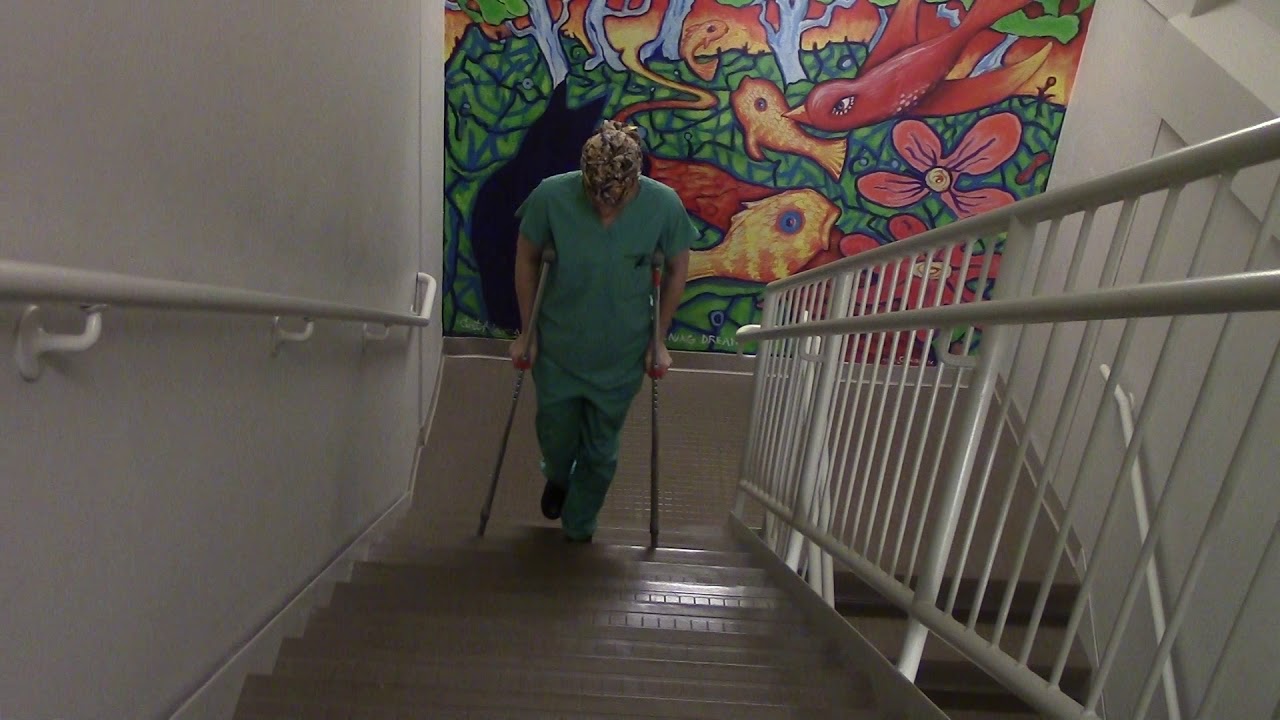
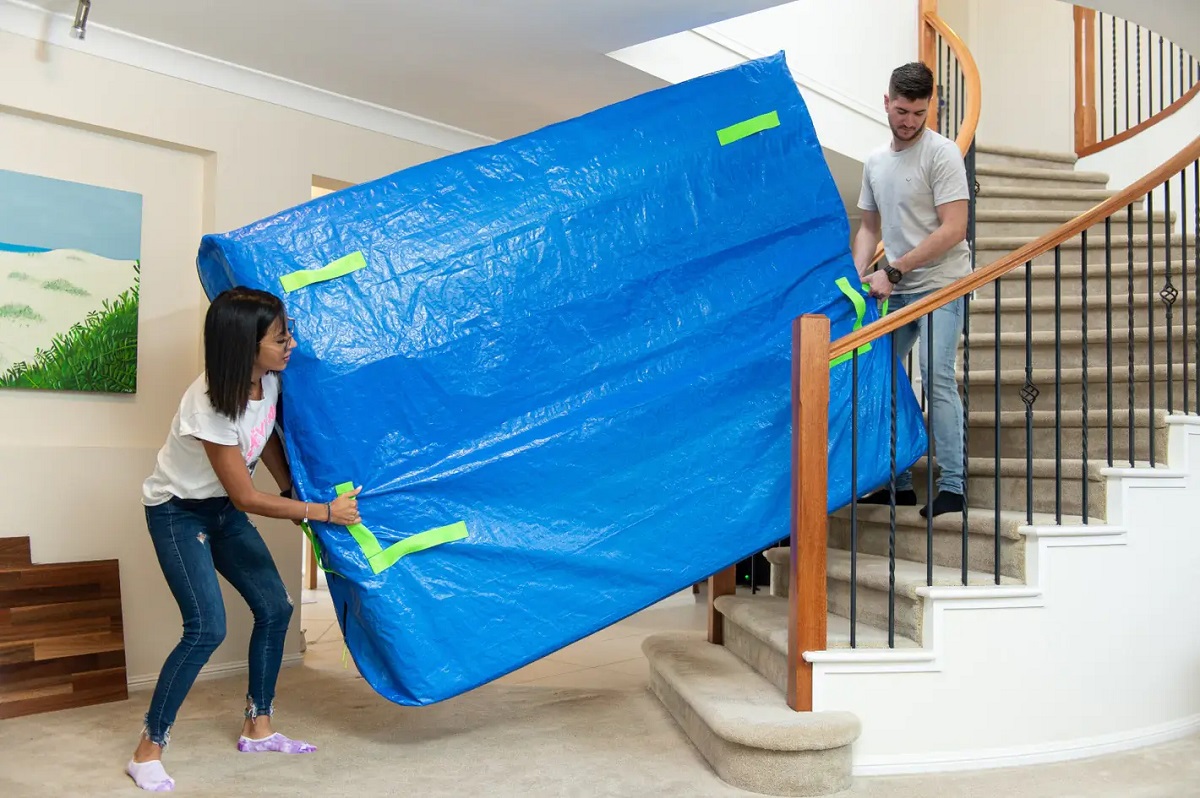

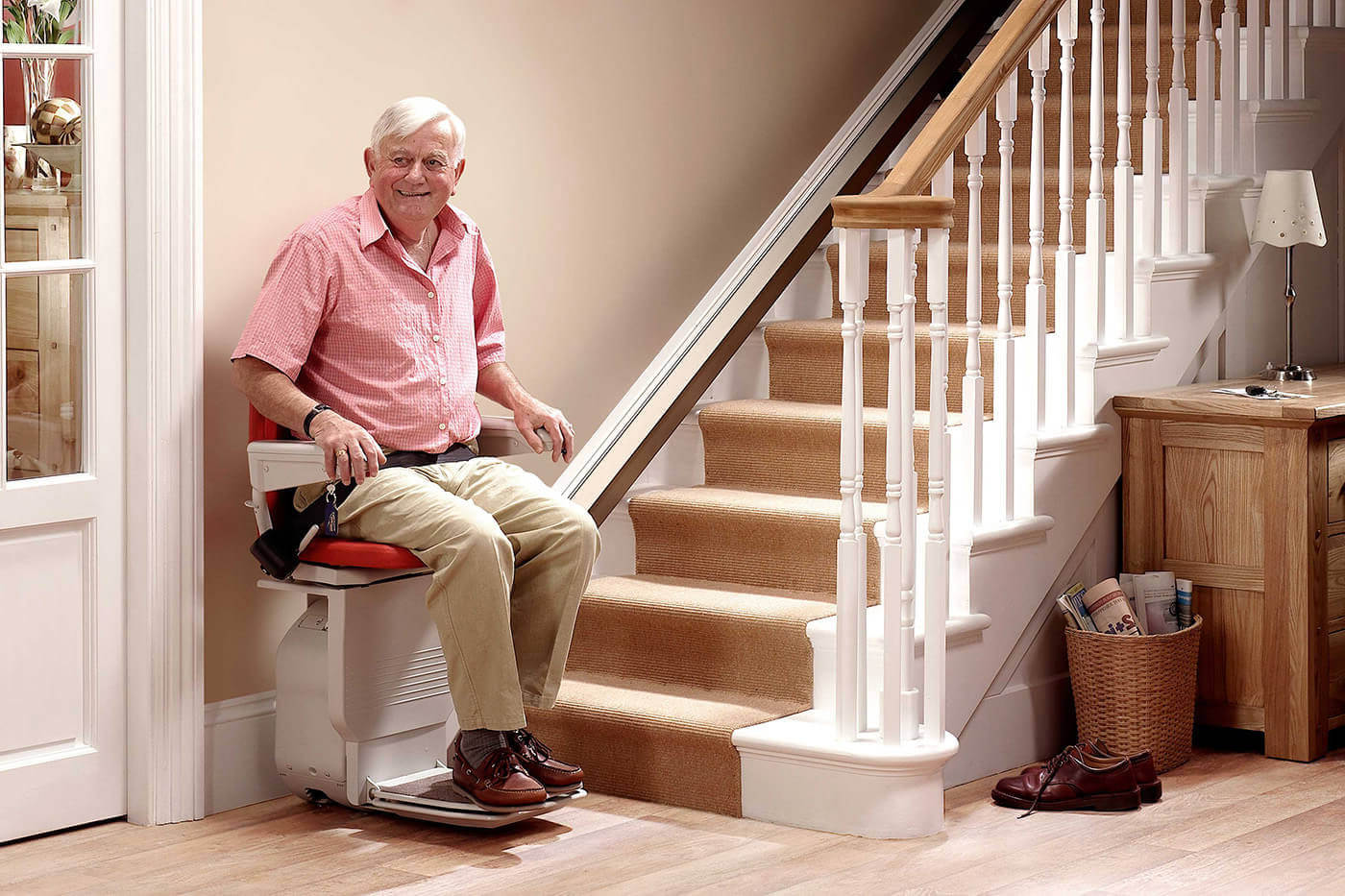
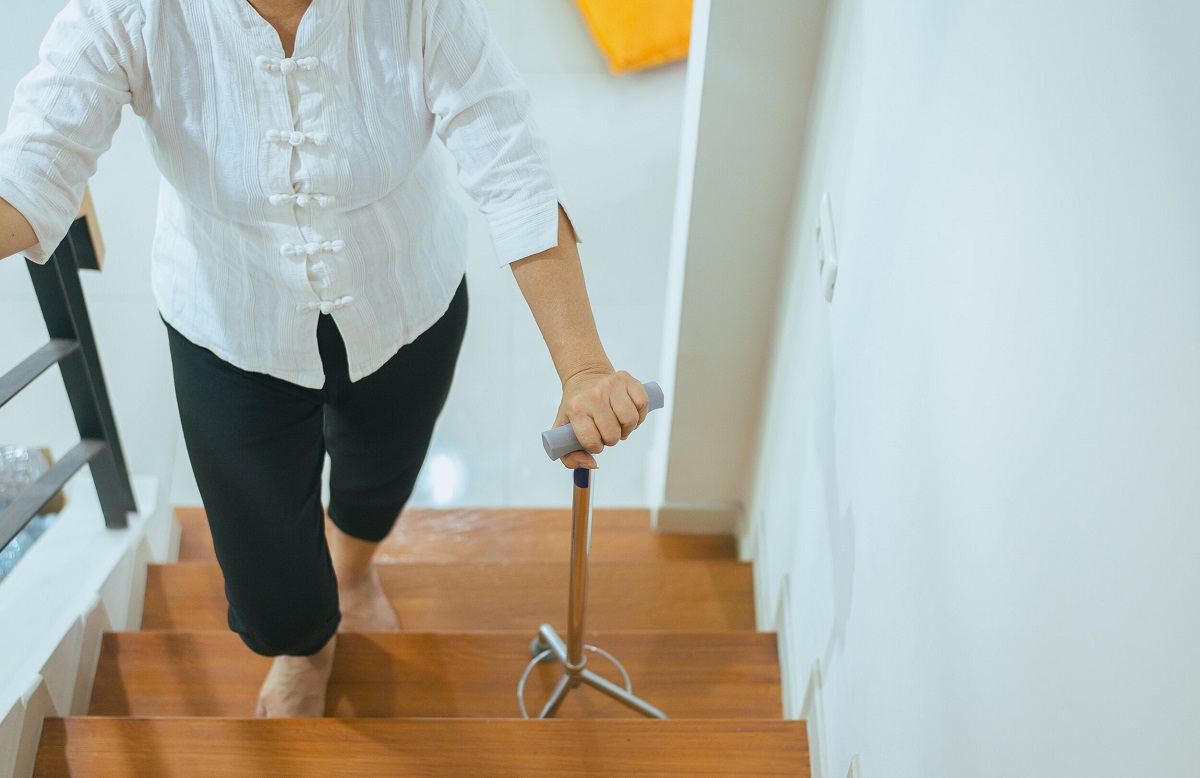


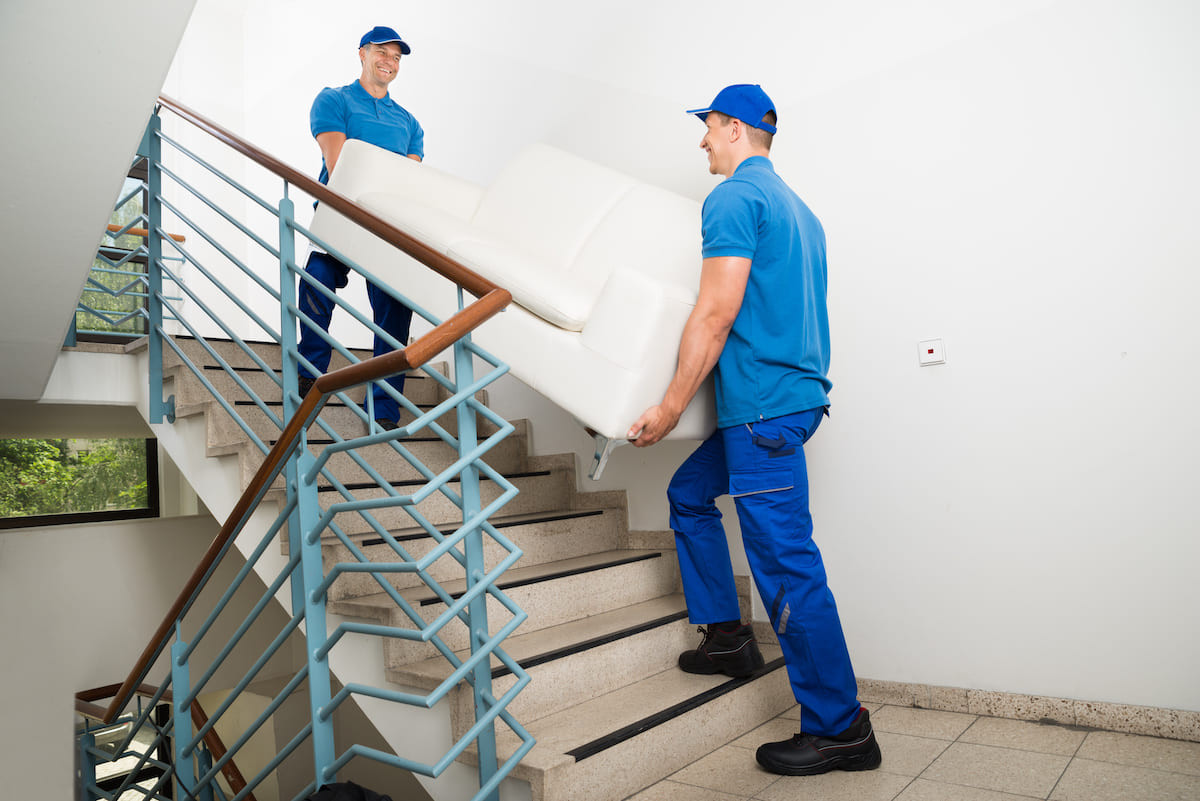

0 thoughts on “How To Move Furniture Up Stairs”